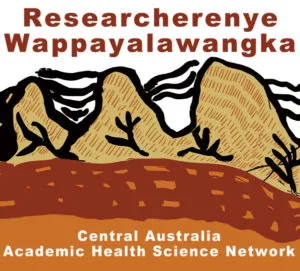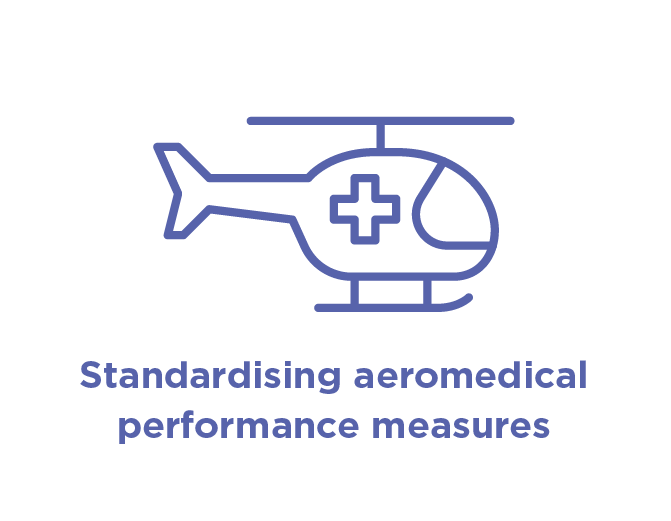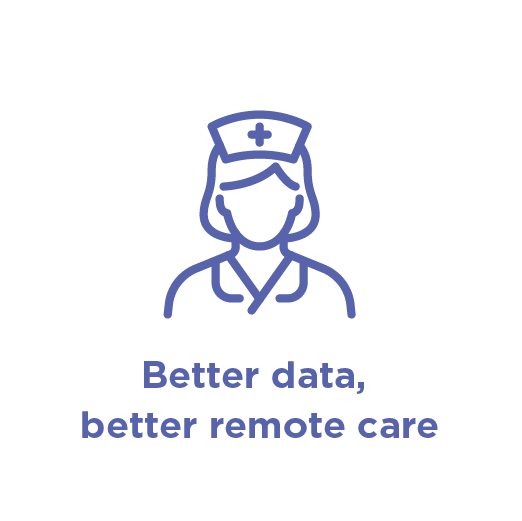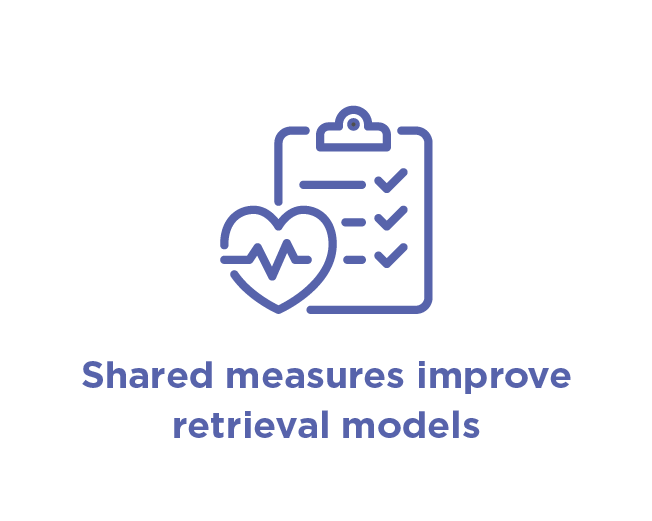The Central Australia Academic Health Science Network is an NHMRC-accredited Research Translation Centre. We collaborate to deliver research-informed healthcare and training. The below case studies highlight our work in translating research into better health outcomes and building capability across the system.
Case studies on this page:
- Developing, re-designing or adopting platforms, systems or workforce initiatives: The right workforce at the right time: Improving the effectiveness and efficiency of aeromedical retrieval systems in remote Australia
- Providing better care: Co-designing, implementing and evaluating retention strategies for health staff in Aboriginal Community Controlled Health Services
- Meeting the needs of your end-users in your population: Youth Diabetes Prevention Program: ‘Tribal Turning Point’

Case studies from all Research Translation Centres are available from Impact and outcomes.
Developing, re-designing or adopting platforms, systems or workforce initiatives: The right workforce at the right time: Improving the effectiveness and efficiency of aeromedical retrieval systems in remote Australia
Challenge
The burden of disease and mortality rate increases with increasing remoteness. This results in a need for effective Primary Health Care (PHC) services, and effective emergency services. Given patients in remote communities are geographically distant from hospital emergency departments, efficient and effective medical retrieval services are required to deliver lifesaving care; the challenge is what performance indicators should be used to measure effectiveness and efficiency?
A previous Central Australia Academic Health Science Network (CAAHSN) study funded by the Australian Department of Health, Disability and Ageing’s Medical Research Future Fund (MRFF) Rapid Applied Research Translation Initiative (RART) evaluated a new medical retrieval and PHC advice model introduced in Central Australia in 2018.
The changes to service delivery moved away from a General Practitioner (GP) led model (where GPs took emergency and non-emergency calls) to one where GPs responded to non-acute calls and physicians with critical care skills responded to emergency calls.
This evaluation demonstrated the reorientation of the specialist medical workforce significantly reduced the numbers of retrievals, hospitalisations, Intensive Care Unit (ICU) utilisation and hospitalisation costs while being cost efficient.
More remote community residents were able to remain on country when appropriate; and both emergency and non-emergency care was perceived to be timelier, and efficient. In addition, health professionals in remote clinics felt their access to clinical support was consistent and immediately available.
Recently published scoping reviews revealed there was no agreement on what aeromedical retrieval performance indicators are most appropriate for the remote context; this has implications for system improvements.1,2
Further, retrieval services in remote Australia tend to be disparate organisations and whilst they individually collect key data, there is no central data repository supporting consistent measurement or monitoring of performance.
Approach
This research adopts a mixed methods approach in order to:
- Systematically describe the characteristics of existing aeromedical retrieval services
- Document comparative outputs and health outcomes of these services
- Build consensus for an agreed performance monitoring tool
- Inform ongoing quality improvement activities in Central Australia.
Semi structured interviews will be held with aeromedical retrieval organisation staff. Participants will be asked questions pertaining to the four initially identified research questions (key characteristics of their aeromedical retrieval organisation; key outputs; health outcomes; implications of Medical Retrieval and Consultation Centre findings for their service; key performance indicators).
Analysis of aggregated data regarding key outputs and health outcomes from each of the participating key stakeholder organisation will be undertaken.
Significance
This study, funded under RART, proposes to identify and reach agreement upon key indicators to be used by remote aeromedical services across Australia.
The development of a new performance monitoring tool is significant for future quality improvement purposes especially in relation to quality, efficiency and cost effectiveness in terms of lives saved, and to aid understanding of what retrieval models work for remote populations and why.
There is a strong desire among aeromedical services to reach agreement about suitable performance measurements in order to assist with the development of aeromedical retrieval models that improve health outcomes, and reduce unnecessary retrievals and the need to leave Country and community to receive health care for Aboriginal and non-Aboriginal people living in remote parts of Australia.



Value-add of centre
The centre’s ability to convene a collaborative research application and achieve its funding enabled this research to proceed.
Further, the centre adds value to this project by brokering key relationships and embedding knowledge translation/transmission in the project methodology, as part of the wider RART program under which this project sits.
The independence of the centre ameliorates some of the local political pushback that may accompany what could be seen as a threatening clarification of measuring and comparing success.
Reach
All predominantly remote aeromedical retrieval services across the NT, NSW, Qld, NSW, SA and Tasmania have been invited to participate in both the research and the steering group. In addition, a number of medical retrieval knowledge specialists, Aboriginal Community Controlled Health Services, National Aboriginal Community Controlled Health Organisation (NACCHO) and Aboriginal Medical Services Alliance Northern Territory (AMSANT) have been invited to join the project steering group.
Next steps
The project is underway, progressing well, following agreed to (and ongoing development) of knowledge transfer/transmission pathways.
References
1 Green, D et al (2022) “Evaluation of a new medical retrieval and primary health care advice model in Central Australia” Aust J Rural health
2 Mathew et al (2022) “Optimising medical retrieval processes and outcomes in remote areas in high income countries: A scoping review” Aust J Rural Health
Providing better care: Co-designing, implementing and evaluating retention strategies for health staff in Aboriginal Community Controlled Health Services
Challenge
Aboriginal and Torres Strait Islander people living in remote areas experience high rates of injury, chronic disease and poverty; effective and accessible Primary Health Care (PHC) is understood to be key to improving health outcomes. A stable resident health workforce is required to deliver effective PHC services; concerns are frequently raised about the impacts of workforce instability on patient care, on resident health care staff and on health system costs.
There has been an increasing reliance on short term or a ‘Fly in/Fly out and Drive-in/Drive-out’ health workforce in remote PHC clinics; a 2016 cross sectional analysis in the Northern Territory (NT) found that 42% of nurses employed by NT Health were employed on a casual or agency contract.1
Although negative impacts of workforce instability may be mitigated in settings where PHC services are provided by Aboriginal Community Controlled Health Services (ACCHS), there has been limited empirical data relating specifically to the impact of community control on workforce retention.
A previous Central Australia Academic Health Science Network (CAAHSN) study funded by the Australian Department of Health, Disability and Ageing’s Medical Research Future Fund (MRFF) Rapid Applied Research Translation Initiative (RART) known as ‘RART 2’, involved 11 participating ACCHS quantifying staff turnover and retention in regional and remote ACCHSs in the NT and Western Australia (WA). It also examined correlations between turnover and retention metrics, and ACCHS’s geographical and demographic characteristics and found:2
- Mean annual turnover rates for staff were very high, with 151% turnover rates at the clinic level and 81% turnover rates at the organisation level
- Mean annual turnover rates for client-facing staff were 164% and 75%, compared to 120% and 98% for non-client-facing staff, at clinic and organisational levels, respectively
- Mean 12-month stability rates were low, with clinic-level stability rates of only 49% and organisation-level stability rates of 58%
- Mean annual clinic-level turnover rates were 162% for non-Aboriginal staff and 81% for Aboriginal staff.
Improved retention could reduce the burden on ACCHSs’ resources and may also support quality of service delivery due to improved cultural safety and continuity of care.
The challenge is to design, implement and evaluate retention bundles to reduce staff turnover and the reliance on short term staffing. This RART 3 project aims to do just that.
Approach
Both qualitative and quantitative approaches will be used. The CAAHSN RART 3 project aims to work with four participating ACCHS (Central Australian Aboriginal Congress, Pintubi Homelands Service, Katherine West Health Board and Torres Health Indigenous Corporation) to co-design, implement and prospectively evaluate evidence-based retention bundles on: staff turnover and retention; workload, professional satisfaction, and continuity of patient care.
A participatory action research approach will be used for the co-design and implementation stages of the research. In addition, guides will be produced to enable health services to measure staff turnover and retention. The guides will be workshopped with health service staff to ensure end user relevance and tailored to individual service needs.
Significance
The Australian Health Ministers’ Advisory Council Workforce Strategic Framework 2026–2023 stated that staff turnover and retention are amongst the most significant service delivery issues for Aboriginal Community Controlled Health Services.3 The longstanding and persistent workforce shortages were exacerbated during COVID-19 with a number of communities in central Australia experiencing clinic closures or reduced opening hours.
Given the high costs of staff turnover, particularly in the remote context and the current shortfall of funding for these remote clinics, estimated at $80 million per year for the NT,4 the study findings have profound implications for funding remote PHC.
Previous research has demonstrated that lower staff turnover is cost-effective in terms of saving years of life and improves continuity of care leading to better health outcomes for remote living Aboriginal people. This may include reducing the need for hospitalisation and emergency department visits/evacuations.
The need for robust evidence to inform retention approaches in remote ACCHS is critical; this project is expected to demonstrate what elements of remote health workforce bundles are effective for retaining what group of health providers while providing insight into how these elements work to improve job satisfaction and reduce intentions of staff to leave.
Value-add of centre
CAAHSN is in a unique place to bring together and support the collaborations required for this multi-service project.
Further, the interconnection of CAAHSN research projects through formal mechanisms (such as through the RART 3 impact framework and RART 3 Program Coordination Group) and informal mechanisms (network events and communications) maximises cross-project value and learnings.
The centre also facilitates wider knowledge transfer through communications and events such as the CAAHSN Showcase and ensures academic and other knowledge translation through monitoring via research contracts.
Reach
This project will be conducted across Central and Northern Australia (NT, WA and Queensland).
Next steps
This project is underway, with formal knowledge translation pathways being progressed and monitored and the project contributing to the wider RART 3 program aims, including the refinement of the CAAHSN Impact Framework and its knowledge translation pathways.
References
1 NT Health (2026) Remote area nurse safety on-call after hours security. Darwin, NT: Northern Territory Government
2 Veginadu, P., et al (2024). Patterns of health workforce turnover and retention in Aboriginal Community Controlled Health Services in remote communities of the Northern Territory and Western Australia, 2017–2019. Human Resources for Health, 22(1), 1-10
3 AHMAC (2017) Australian Health Ministers’ Advisory Council. National Aboriginal and Torres Strait Islander health workforce strategic framework 2016–2023. Canberra: Commonwealth of Australia; 2017
4 Zhao Y, et al. (2022) Remoteness, models of primary care and inequity: medicare under-expenditure in the Northern Territory. Aust Health Rev. 2022;46(3):302–8
Meeting the needs of your end-users in your population: Youth Diabetes Prevention Program: ‘Tribal Turning Point’
Challenge
Type 2 Diabetes Mellitus (T2DM) and obesity in children and adolescents is a growing global concern. In Australia, the incidence rates of T2DM are 18 times higher among Aboriginal and Torres Strait Islander children and adolescents compared to non-Aboriginal youth. This has significant implications for their health throughout the life course.
Given this, effective management strategies are needed to improve diabetes health outcomes, but little is known about First Nations young people’s perspectives on existing therapeutic options making it a challenge to develop tailored (developmentally appropriate and culturally safe) diabetes management strategies.
A previous Central Australia Academic Health Science Network (CAAHSN) study funded by the Australian Department of Health, Disability and Ageing’s Medical Research Future Fund (MRFF) Rapid Applied Research Translation Initiative (RART) known as the ‘RART 2’ study brought together the lived experience of Aboriginal and Torres Strait Islander young people, their families and communities, and health professionals providing diabetes care through a structured yet flexible co design process in order to adapt a behavioural intervention program (Tribal Turning Point) which had been successfully implemented (with a 97% retention of young people in the program) with First Nations communities in North America.1
A key finding was the need for trained local facilitators to ensure culturally appropriate program delivery, and the need for community ownership. The readiness of the community to engage with the program and make recommendations, enhanced by the readiness of the researchers to embrace the authority and autonomy of the community members, highlighted the concerns of family members and the need for a diabetes prevention program for young people.
A Tribal Turning Point (TPP) Program Manual has been developed for the Central Australian context.
Approach
The approach is a hybrid implementation-effectiveness trial of the adapted TTP program in a number of remote communities within Central Australia and the Barkly among 200 6–11 year old Aboriginal children. The trial will be a cluster randomised trial.
The researchers will lead the evaluation of implementation and effectiveness, and the health services will lead engagement and program delivery.
Significance
The CAAHSN funded RART 3 project aims to implement and evaluate (feasibility and sustainability) a culturally-effective and sustainable healthy lifestyle program for families with primary school aged children and to:
- Empower communities/families and individuals to sustainably deliver the adapted Tribal Turning Point program for improvement in long term health outcomes
- Build community ownership & leadership of the adapted program
- Community capacity building in delivery of the adapted program
- Embed TTP into the regular activities of participating ACCHS
- Develop capacity within health promotion and allied health teams to also deliver the program (program sustainability)
- Identify required policy change, funding and/or infrastructure to enable ongoing delivery of the program.
The aims of this project are:
- Successfully adapted program implemented within the community by local people
- Healthy Body Mass Index (BMI) among children
- Behaviour change – participating in healthier activities
- Community advocacy for sustainable program delivery.
This research will have significance nationally among Australian Aboriginal and Torres Strait Islander communities and be of relevance to the increasing global issue of youth onset obesity and diabetes.
Value-add of centre
The centre’s capacity to build on previous centre-attracted research and extend this to deeper translation across a wide range of partners and contexts reflects the critical role of the centre’s research translation through collaboration strategy, and the trust that has been built up over years in what can be a contested intercultural environment.
Reach
Working in partnership with Central Australian Aboriginal Congress, Anyinginyi Health Aboriginal Corporation and communities across 3 regions as follows: urban Alice Springs, remote Central Australia (2 remote Congress communities) and the Barkly region.
Next steps
The acceptability of the amended TTP program has been demonstrated, the next step is to implement and evaluate the program with fidelity to the RART 2 study recommendations.
References
1 Rohit, A., McCarthy, L., Mack, S., Silver, B., Turner, S., Baur, L. A., Canuto, K., Boffa, J., Dabelea, D., Sauder, K. A., Maple-Brown, L., & Kirkham, R. (2021). The adaptation of a youth diabetes prevention program for Aboriginal children in central Australia: Community perspectives. International Journal of Environmental Research and Public Health, 18(17), 1-14

